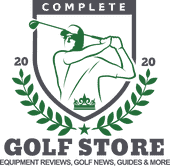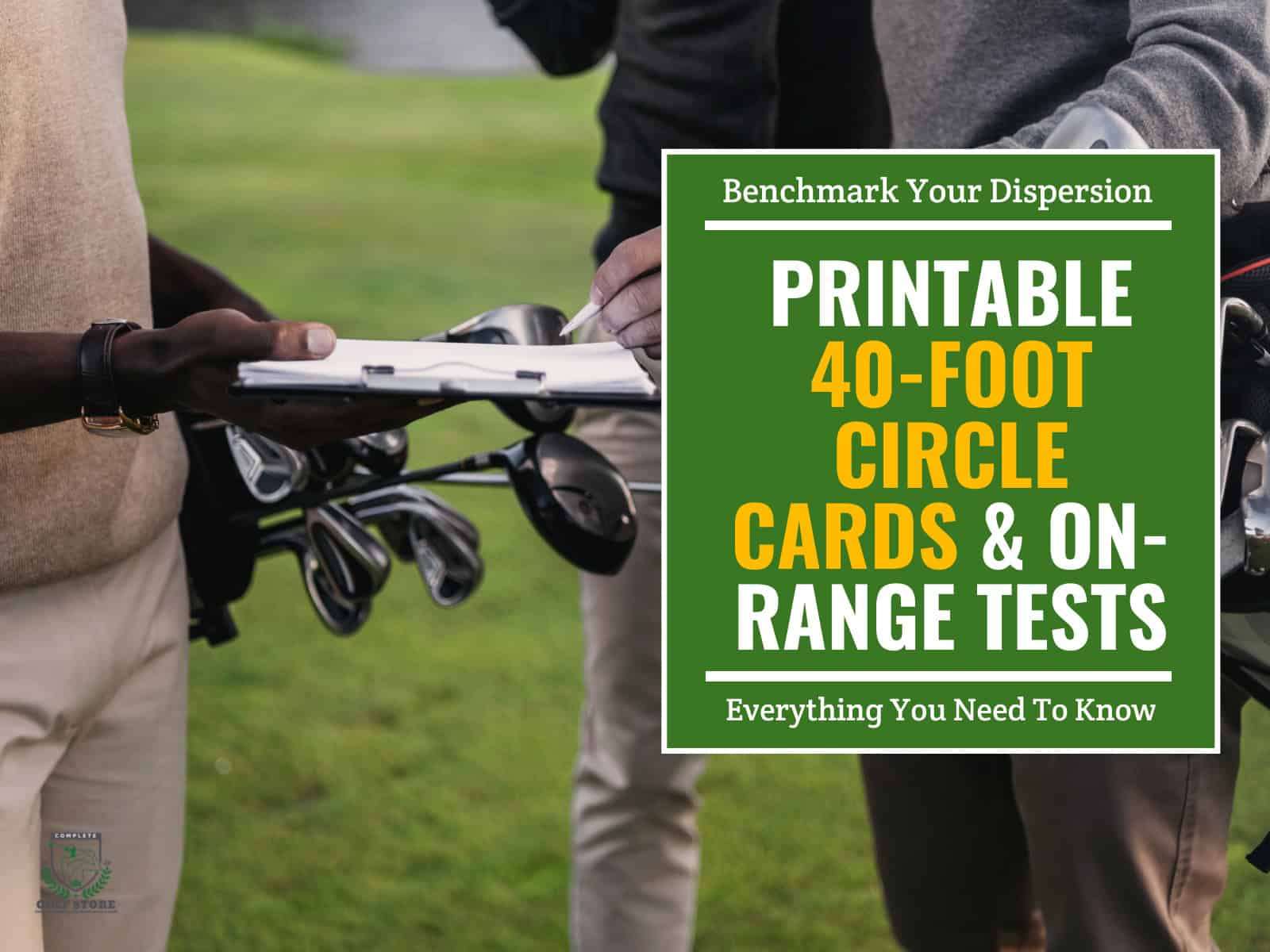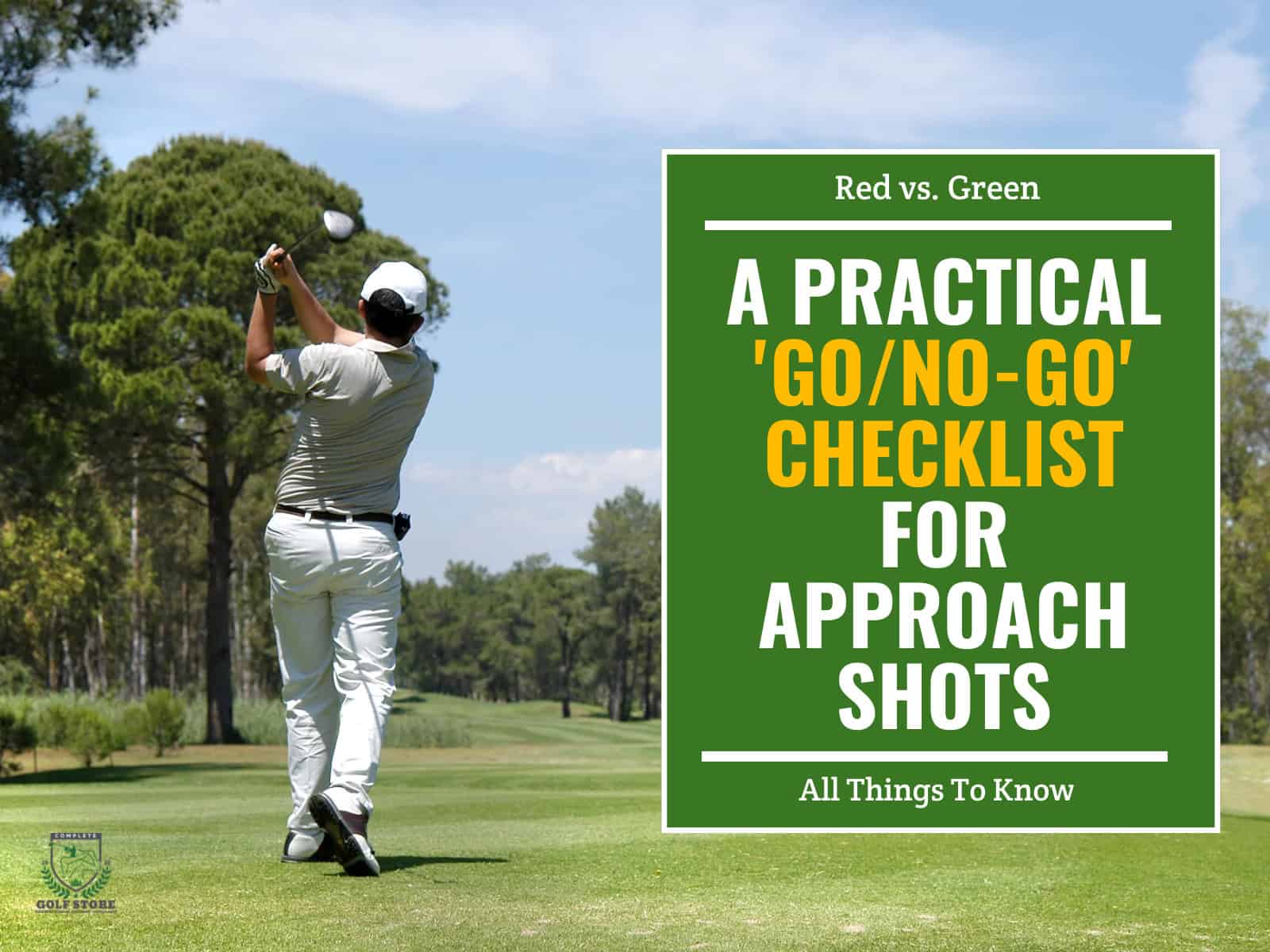Improving your golf swing takeaway is essential for enhancing your overall game. A precise takeaway sets the foundation for a smoother, more powerful swing.
By practicing effective at-home drills, you can work on key aspects of your technique, such as balance, connectivity and grip, even without a golf course. You’ll be able to transform your game from the comfort of your home, building muscle memory that translates to the greens.
In this article, we will suggest some drills to work on takeaway, refine your swing and build confidence and consistency.
- 1) Understanding the Fundamentals of a Proper Takeaway
- 2) At-Home Drills for Perfecting Your Takeaway
- 3) Mastering the Shoulder Blade Movement
- 4) Avoiding Common Takeaway Mistakes
-
5)
Frequently Asked Questions
- 5.1) Why is the takeaway so important in golf?
- 5.2) Can these drills help if I struggle with flexibility?
- 5.3) How often should I practice these drills to see improvement?
- 5.4) What should I do if my takeaway feels unnatural?
- 5.5) Are there any tools or aids that can help with my takeaway practice?
- 5.6) How can I maintain consistency in my takeaway under pressure?
- 5.7) How do I transition from practicing drills to applying them on the course?
- 6) Final Thoughts
Understanding the Fundamentals of a Proper Takeaway
A solid golf swing takeaway sets the stage for a powerful and accurate shot. By mastering the fundamentals of a proper takeaway, you can build a strong foundation for your entire swing. So, what are the key elements that make up a well-executed takeaway?
The Importance of a Coordinated Takeaway
One of the most crucial aspects of a proper takeaway is the coordination between your arms and body. As you initiate your backswing, your arms should move in sync with your upper body, maintaining a constant relationship throughout the motion. A helpful visual cue is to imagine your hands and arms forming a triangle with your shoulders, and this triangle should remain intact during the takeaway.

Another essential element is maintaining a 45-degree shoulder tilt, which helps you keep your spine angle consistent and promotes a more efficient turn. Be mindful not to lift or dip your shoulders, as this can throw off your balance and alignment.
Common faults to avoid during the takeaway include club face roll and arm-only swings. Club face roll occurs when the club face opens or closes excessively during the takeaway, leading to inconsistent shots. Arm-only swings, on the other hand, happen when your arms move independently of your body, resulting in a disconnected and less powerful swing. Focus on keeping your arms and body working together for optimal results.
Managing the Club Face
Proper club face management is key to a successful takeaway. Start by ensuring your thumb is positioned at a 45-degree angle on the grip. This placement helps you maintain control over the club face throughout the swing.
As you take the club back, keep the club face parallel to your spine. This alignment allows for a square club face at impact, promoting straighter shots. If the club face gets too open or closed during the takeaway, it can be challenging to square it up consistently at impact.

Flexibility also plays a role in managing the club face during the takeaway. If you have limited flexibility, you may find it more difficult to maintain the ideal club face position. In this case, focus on making a smooth, controlled takeaway and prioritize keeping the club face as neutral as possible. With practice and targeted stretching exercises, you can gradually improve your flexibility and fine-tune your club face control.
At-Home Drills for Perfecting Your Takeaway
Incorporating targeted drills into your practice routine can help you develop muscle memory and ingrain the correct movements. Let’s explore three effective at-home drills designed to perfect your takeaway.
The “Arm Practice” Drill
The “Arm Practice” drill focuses on promoting connectivity and sequence in your swing. Start by rehearsing your takeaway with just your trail arm (right arm for right-handed golfers). As you take the club back, focus on pulling your lead arm (left arm for right-handed golfers) along with your trail arm. This movement helps synchronize your arms and encourages a more cohesive swing.
Here’s a step-by-step guide to performing the “Arm Practice” drill:
- Take your normal golf stance without a ball.
- Place your trail hand on the club, keeping your lead arm relaxed at your side.
- Initiate the takeaway by pulling the club back with your trail arm, allowing your lead arm to follow naturally.
- Pause at the top of your backswing, ensuring your arms are connected and your wrists are hinged.
- Slowly return to the starting position, maintaining the connection between your arms.
- Repeat the drill 10-15 times, focusing on the feel of your arms working together.
The “Feet to Ground” Drill
The “Feet to Ground” drill is designed to help you build power through proper balance and weight shift. By practicing barefoot, you can better feel your connection to the ground and develop a more stable base for your swing.
To incorporate this drill into your practice routine, follow these steps:
- Find a level surface, such as a mat or carpet, and remove your shoes and socks.
- Take your normal golf stance, and distribute your weight evenly between your feet.
- Begin your takeaway and pay attention to how your weight shifts onto your back foot.
- As you reach the top of your backswing, ensure that your weight remains centered and your front foot maintains contact with the ground.
- Complete the swing, allowing your weight to shift onto your front foot as you rotate through the shot.
- Repeat the drill 10-15 times, paying special attention to your feet interacting with the ground.
Experimenting with Grip Types

Your grip plays a significant role in the success of your takeaway and overall swing. Experimenting with different grip types can help you find the most comfortable and effective option for your unique swing. Learning proper golf grip techniques is essential for improving your game.
The three main grip types are:
- Weak grip: The thumb of your lead hand is positioned more on top of the grip, with your trail hand turned slightly underneath.
- Neutral grip: The thumb of your lead hand is positioned slightly to the side of the grip, with your trail hand more on top.
- Strong grip: The thumb of your lead hand is positioned more to the side of the grip, with your trail hand turned slightly over the top.
To determine the right grip for your swing, make practice swings with each grip type, focusing on how it affects your takeaway and overall swing. Pay attention to the ease of movement, level of control and consistency of your shots. Over time, you’ll develop a preference for the grip that works best for you.
Mastering the Shoulder Blade Movement
While many golfers focus on their arms and hands during the takeaway, the true power and efficiency of the movement come from the proper engagement of the shoulder blades and torso. In this section, we’ll explore the role of shoulder blade movement in the takeaway and how to optimize it for a more effective swing.
The Efficient Takeaway
An efficient takeaway is characterized by a subtle yet crucial movement of the shoulder blades. As you initiate your backswing, move your right shoulder blade (for right-handed golfers) in and down toward your spine. This movement should be limited to just 2-3 inches, as any more can lead to overswinging and loss of control.

To achieve this efficient shoulder blade movement, maintain a centered position, with your spine angle remaining constant throughout the takeaway, allow your upper body to rotate around your spine, rather than swaying or shifting laterally and keep your arms relaxed and connected to your body, letting your shoulder blades guide the movement.
By mastering this compact and efficient shoulder blade movement, you’ll create a more stable and powerful foundation for your entire swing.
The Role of the Obliques
In addition to the shoulder blades, the oblique muscles play a critical role in the takeaway. The obliques, located on the sides of your torso, are the primary movers of the upper body during the initial stages of the backswing.
To engage your obliques effectively, minimize arm and hand involvement in the takeaway, allowing your torso to initiate the movement. Feel a gentle stretch in your obliques as you rotate your upper body away from the target and maintain a stable lower body, with your hips and legs providing a solid base for your torso rotation.
To further enhance the engagement of your obliques during the takeaway, try these simple drills:
- The Torso Twist: Take your golf stance without a club, placing your arms across your chest. Rotate your upper body back and through, focusing on how your obliques control the movement.
- The Oblique Hold: During your practice swings, pause at the top of your backswing and hold the position for 3-5 seconds. This drill helps you develop awareness of your oblique engagement and builds strength in these critical muscles.
Avoiding Common Takeaway Mistakes
Even with a solid understanding of the fundamentals and regular practice of targeted drills, you can still fall prey to common takeaway mistakes. These errors can lead to inconsistency, loss of power and difficulty controlling the club face. Let’s identify one of the most prevalent takeaway mistakes and provide strategies for correcting it.
Taking the Club Too Far Inside
A common issue among amateur golfers is taking the club too far inside during the takeaway. This mistake can cause the club to become trapped behind the body, leading to a loss of power and accuracy. To illustrate this concept, let’s compare the takeaway of an everyday golfer to that of professional golfer Adam Scott (the golfer, not the actor).
Adam Scott is known for his textbook takeaway, which follows an ideal plane line (The 28 sec. video below compares Adam Scott and Tiger Woods backswinging). In contrast, many amateur golfers allow their hands and club to drift too far inside, deviating from this optimal path. To correct this mistake, focus on maintaining a consistent space between your hands and body throughout the takeaway.
Here are a few drills to help fix an inside takeaway:
- Rock the Triangle: Start with a club across your shoulders, forming a triangle with your arms. Rotate your torso back and through, keeping the triangle intact. This drill reinforces the connection between your arms and body during the takeaway.
- Open Hand: Practice your takeaway with an open trail hand grip, allowing the club to sit more in your fingers. This grip modification can help prevent the club from getting too far inside.
- “Steroid Drill”: Place a ball or small object between your trail arm and body. Make slow, deliberate takeaways while focusing on keeping the object in place. This drill helps you maintain the correct distance between your arm and body.
Applying Drills to Your Swing
When incorporating these drills into your practice routine, it’s essential to focus on the feel of the movement rather than the outcome. Remember that the goal is to ingrain new habits and muscle memory, which takes time and repetition. To further enhance your practice, consider incorporating effective exercises for golf swing rhythm into your routine.
As you become more comfortable with the drills, gradually integrate them into your full swing. Start with slow, partial swings and progressively increase the speed and range of motion until you’re making full swings with the corrected takeaway.
To track your progress and identify areas for further improvement, consider filming your swing from multiple angles. Analyze your takeaway and compare it to the ideal models discussed earlier. Make note of any persistent mistakes and focus your practice on addressing those specific issues.
Frequently Asked Questions
We have answered some commonly asked questions to ensure everything is covered in this guide and that by the end of this article, you will be well-equipped to perfect your takeaway and the entire game.
Why is the takeaway so important in golf?
The takeaway is crucial because it sets the foundation for the entire swing. A proper takeaway ensures that the club is on the correct path, the body is in the right position and you can generate power efficiently. Consistency in the takeaway leads to more accurate and powerful shots.
Can these drills help if I struggle with flexibility?
Yes, these drills can be beneficial even if you have limited flexibility. Focus on making controlled, compact movements and prioritize proper form over range of motion. Regularly practicing these drills can help improve your flexibility over time. Additionally, consider incorporating stretching and mobility exercises into your routine.
How often should I practice these drills to see improvement?
Consistency is key when it comes to improving your takeaway. Aim to practice these drills for at least 15-20 minutes per session, 3-4 times a week. Regularly incorporating these drills into your practice routine will help ingrain the proper movements and lead to more noticeable improvements in your swing.
What should I do if my takeaway feels unnatural?
If your takeaway feels unnatural, it’s likely because you’re trying to change a deeply ingrained habit. Be patient with yourself and focus on the feeling of the correct movements rather than the outcome. Break the drills down into smaller components and practice them slowly. Over time, the proper takeaway will start to feel more natural.
Are there any tools or aids that can help with my takeaway practice?
Yes, there are several training aids designed to help with takeaway practice. Some popular options include:
– Alignment sticks to check your club path and body alignment.
– Swing plane trainers to guide your club on the correct plane.
– Wrist hinge trainers to promote proper wrist angles.
– Mirror or video camera to provide visual feedback on your movements.
While these tools can be helpful, they should be used in conjunction with proper drills and instruction.
How can I maintain consistency in my takeaway under pressure?
To maintain consistency under pressure, focus on your pre-shot routine and breath control. Take a moment to visualize the proper takeaway and feel the correct movements before each shot.
Take deep breaths to calm your nerves, stay relaxed and trust your practice and the muscle memory you’ve developed through consistent drilling.
How do I transition from practicing drills to applying them on the course?
To transition from drills to on-course performance, start by incorporating the drills into your pre-round warm-up routine. Hit a few practice shots focusing on the key takeaway elements you’ve been working on. During your round, maintain a smooth tempo and prioritize solid contact over distance.
Trust your swing and don’t try to force the new movements. With consistent practice and patience, your improved takeaway will become second nature on the course.
Final Thoughts
The at-home drills discussed in this article provide practical ways to refine your takeaway technique, focusing on key elements like connectivity, balance and grip. Consistent practice is essential for improvement, so dedicate time to regularly practice these drills and be patient with yourself.
To further enhance your learning and track your progress, consider seeking feedback from a qualified golf instructor. Improving your swing takeaway is an ongoing process that requires dedication and persistence.
If you have any questions or comments, please leave them below, or send us an email; we will be very happy to assist you.
Happy golfing!





